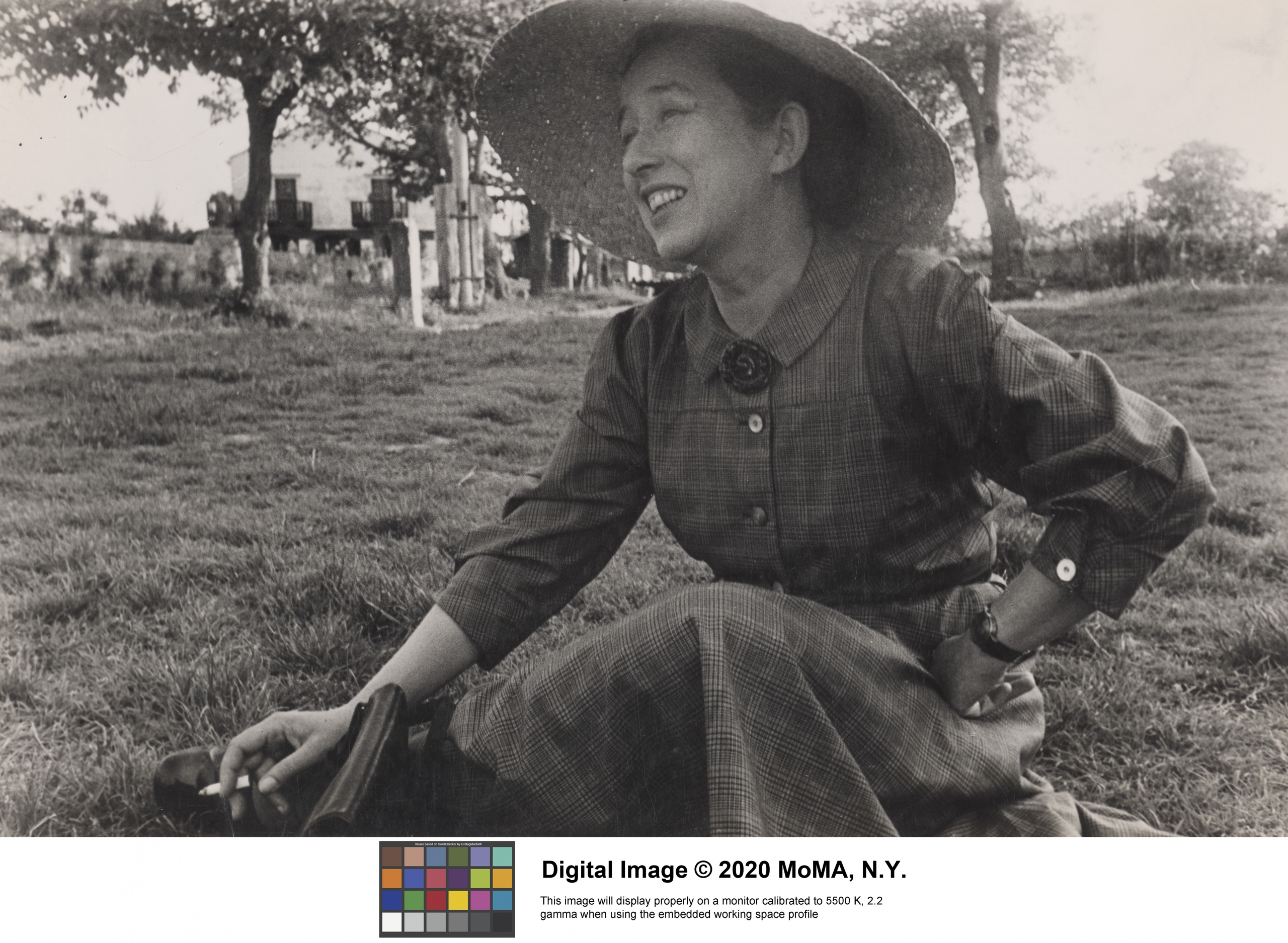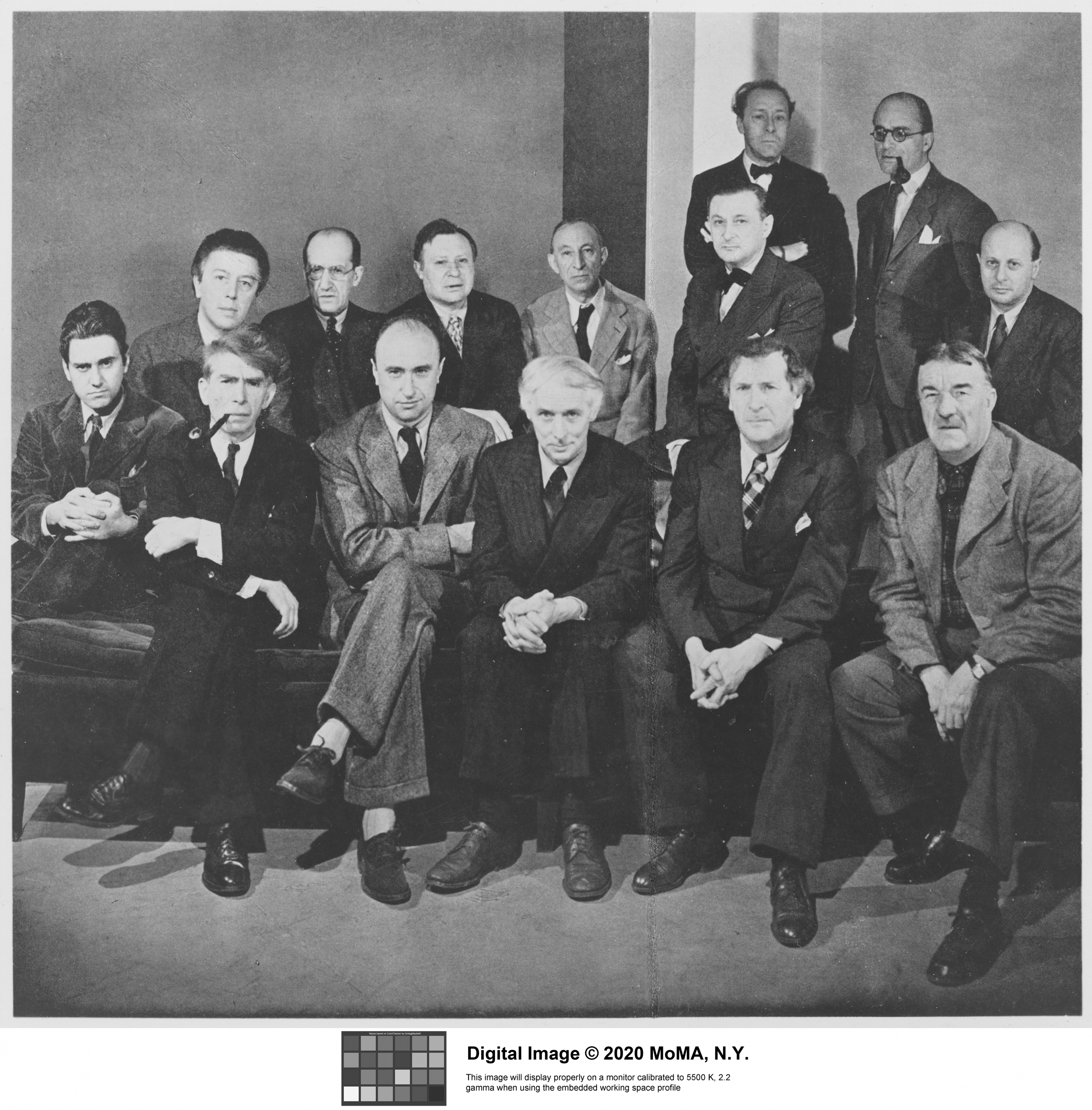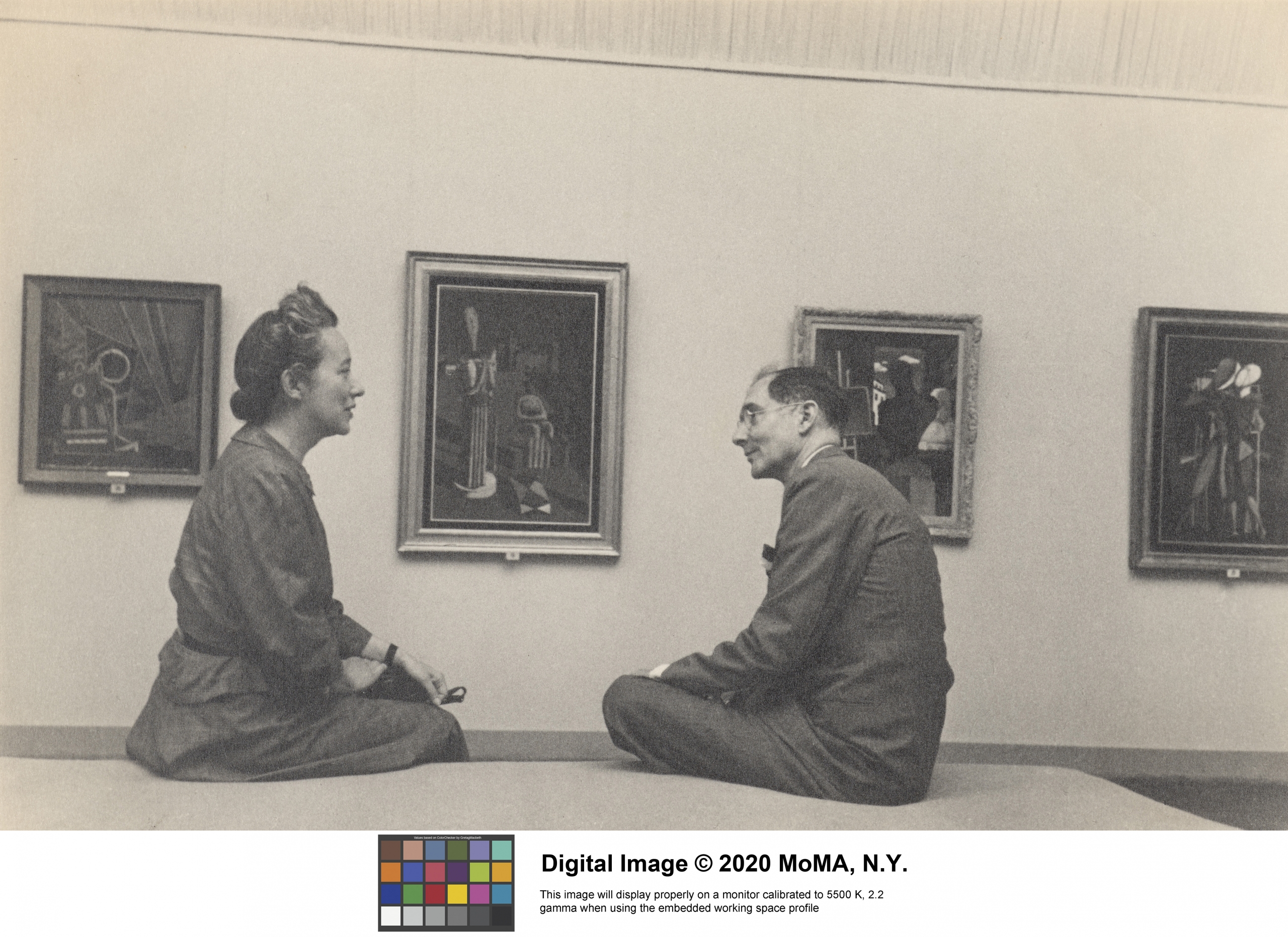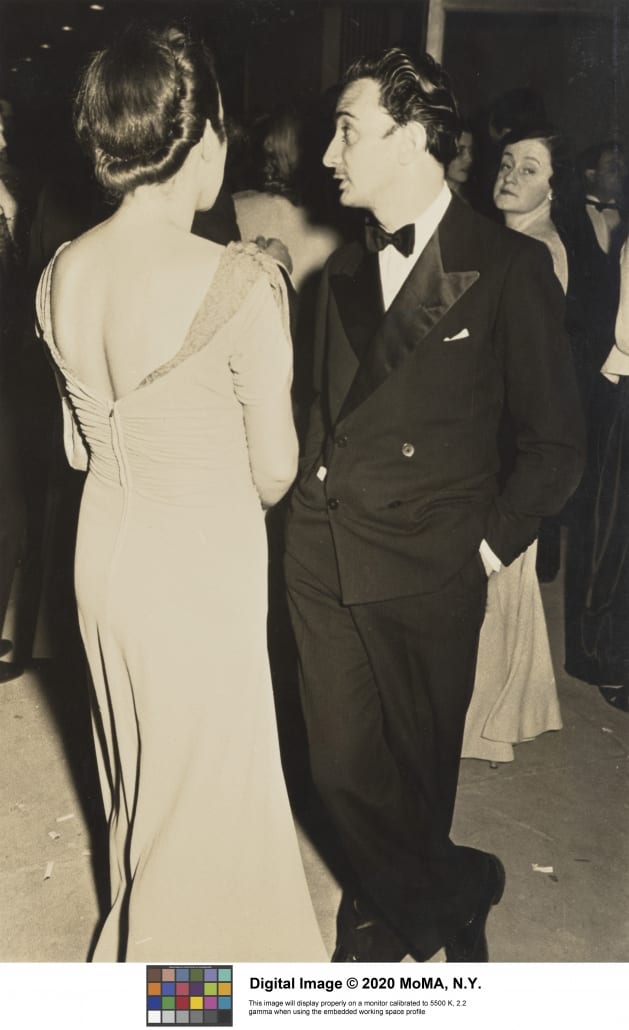Museum of Modern Art’s “Margaret Scolari Barr Papers”

Museum of Modern Art’s “Margaret Scolari Barr Papers”
Peitho Volume 22 Issue 3 Spring 2020
Author(s): Lynée Lewis Gaillet
Lynée Lewis Gaillet, Distinguished University Professor and Chair of the English department at Georgia State University in Atlanta, GA, is author of numerous articles and book chapters addressing Scottish rhetoric, writing program administration, composition/rhetoric history and pedagogy, publishing matters, and archival research methods. She is a recipient of a National Endowment for the Humanities (NEH) Award and an International Society for the History of Rhetoric (ISHR) Fellowship. Her book projects include: Scottish Rhetoric and Its Influence (1998), Stories of Mentoring (2008), The Present State of Scholarship in the History of Rhetoric (2010), Scholarly Publication in a Changing Academic Landscape (2014), Publishing in Community: Case Studies for Contingent Faculty Collaborations (2015), Primary Research and Writing: People, Places, and Spaces (2016), On Archival Research (2016), Writing Center and Writing Program Collaborations (2017) and Remembering Differently: Re-figuring Women’s Rhetorical Work (2019). Gaillet is a Past President of the Coalition of Feminist Scholars in the History of Rhetoric and Composition, and Past Executive Director of the South Atlantic Modern Language Association.
Tags: 22-3, alternative academic work, archival research practices, art history, co-authorship, grassroots social justice collaboration, innovative educational practices
Fig. 1. Margaret Scolari Barr in Venice. Miller, Lee (1907-1977) © Lee Miller Archives. Margaret Scolari Barr in Venice, Italy. June, 1948. Gelatin silver print, 5 1/2 x 8 1/4″ (14 x 21 cm). Margaret Scolari Barr Papers, I.E.2. The Museum of Modern Art Archives, New York.© Conde Nast Publications LTD. The Museum of Modern Art, New York, NY, U.S.A.
Margaret Scolari Barr, wife of the Founding Director of the Museum of Modern Art (MoMA) in New York, is recognized as her husband’s collaborator, co-author, translator, and helpmeet; however, her pivotal feminist work is less well known. This essay introduces Barr to a larger, interdisciplinary audience, inviting feminist scholars interested in not only contemporary art history but also innovative educational practices, grassroots social justice collaboration, co-authorship, archival research practices, and alternative academic work to visit her archival materials housed at MoMA.
The “Margaret Scolari Barr Papers” (the collection contains materials from 1883-1989, but the bulk of documents and artifacts come from 1925-1987) comprise 38 linear feet and include documents addressing MoMA founding, operations, and exhibits collated between the years 1930 and 19671. As primary curator at MoMA, Barr’s correspondence, notes, museum ledgers, and public event materials are of interest to scholars wishing to research the founding of the museum, orchestrated in tandem by Alfred and Margaret Scolari Barr. Yet, perusal of other materials germane to Barr’s life (including her personal correspondence, research materials, draft manuscripts, newspaper clippings, datebooks, photo albums, travel scrapbooks, and household accounts) reveal a deeper understanding of an influential and activist woman leader. Barr’s advocacy and educational activities are compelling, warranting recovery and wider retelling through a feminist lens of recollecting. Letizia Guglielmo repurposes re-collecting as a “feminist rhetorical act of gathering or assembling again what has been scattered.” She explains that this process has “connections to public memory and remembrance, highlight[ing] the agency of both the re-collector and the subject whose story is recovered or retold” (2). In this vein, re-collecting Barr’s varied life work seeks not only to preserve the scope of her public memory, but also suggests new avenues for feminist research guided by the interests of the investigator and her intended audiences. Projects from this archive (historically associated only with the history and preservation of modern art) hold the potential to build upon and extend current feminist research discussions and case studies (see contributors to Enoch and Jack 2019; Gaillet and Bailey 2019; Gold and Enoch 2019), specifically inviting feminist scholars to re-envision Barr’s lifework as they “ask different questions, challenge received scholarship, test the efficacy of staid research methods, and chart new scholarly agendas” knowing full well “that their answers may only be provisional, may serve best as a stepping stone or even revision point for the next researcher” (Enoch, Jack and Glenn 5).
In addition to fascinating MoMA ephemera (including photographs of famous artists, exhibition details, and acquisition correspondence), the Margaret Scolari Barr archive includes rich personal correspondence and manuscript materials detailing the research and composing practices of co-authoring with her husband (they called their joint projects “campaigns”), insights into Barr’s life as an adjunct teacher in the first half of the twentieth-century (including job search documents and position negotiations), and innovative pedagogical art history materials she created for all-girl classes. For over forty years, Barr taught art history at the Spence School for Girls, founded in 1892, as well as teaching at Vassar while a student there. These topics dovetail with other emerging micro-histories about erased collaborators and women teachers from this period (see 2019 essays by Bordelon, Grohowski and Hart, Myatt, Myers, and Shirk in Remembering Women Differently). The collected materials also provide rich ground for putting current discussions of archival research methods in conversation with rhetorical scholarship, as illustrated in the final section of this essay. As K.J. Rawson explains in “The Rhetorical Power of Archival Description: Classifying Images of Gender Transgression,” the “selection, organization, and labeling” of archives “functions not only for bureaucratic and access purposes, but for epistemological ones as well” (327).
Margaret Scolari Barr, “Protector and Defender of Modern Art”
Before listing possible research topics suggested by the “Margaret Scolari Barr Papers,” I want to highlight a fascinating avenue of research buried within this MoMA collection, the topic that initially led me to the archive and one that resonates with twenty-first century social justice issues: Barr’s use of her position as wife of the Founding Director of MoMA to sponsor European artists and their family members following the 1940 collapse of Paris during WWII2. Alfred Barr did not have the required time or language skills to assist artists seeking asylum, so asked his wife to shepherd this effort. In a grassroots movement, Margaret Scolari Barr organized and collaborated tirelessly with art dealers and owners (including Peggy Guggenheim), artists, writers, museum employees, and the Emergency Rescue Committee based in Marseilles to obtain detailed documentation, affidavits, and the $400 necessary for each applicant for artistic sanctuary in America. In a life and death endeavor, Barr went far beyond the efforts of the government to ensure the safety of artists, particularly since the “activity at the State department was described as a ‘bottleneck,’ and the whole process as ‘laborious’” (Roob 18). Barr herself explains in a 1980 autobiographical manuscript (“Rescuing Artists in W.W. II”) that she is not sure how many artists were saved by the cooperative, for several reasons:
- She received a great many requests that were initiated but left incomplete because of “formidable hurdles” and delays at the State department (who required proof that the artist was neither leftist or Communist),
- Artists changed their minds about immigrating or found other solutions, and
- Artists were detained and sent to concentration camps (MSB III.A.22, MoMA Archives, NY).

Fig. 2. Artists in Exile. ‘Artists in Exile’: Exhibition at Matisse Gallery March 3-28, 1942. Left to right, first row: Matta Echaurren, Ossip Zadkine, Yves Tanguely, Max Ernst, Marc Chagall, Fernand Lger; Second row: Andre Breton, Piet Mondrian, Andre Masson, Amdee Ozenfant, Jacques Lipchitz, Pavel Tchelitchew, Kurt Seligmann, Eugene Bermann. Research photograph associated with the exhibition, “Matta.” September 11, 1957-0ctober 20, 1957. The Museum of Modern Art, New York. Photographer: George Platt Lynes. Photographic Archive. The Museum of Modern Art Archives. The Museum of Modern Art, New York, NY, U.S.A.
We do know from Barr’s unpublished manuscript that MoMA was responsible for saving “Tanguy, Masson, Ernst, Chagall, Mondrian, Lipchtiz, some with and some without wives” (Barr 12). However, we are only now discovering just how many refugees the Margaret Scolari Barr cooperative sponsored through examination of her papers housed at MoMA and elsewhere (see works by MoMA Fellow Christina Eliopoulos and MoMA Curator Rona Roob published in the MoMA Newsletter). Interestingly, from the archivist-researcher point of view, there is another critical reason that Barr and MoMA’s immigration assistance efforts aren’t more fully documented. Varian Fry, an American journalist who ran a rescue network in Vichy and was recognized as “Righteous among the Nations” by the State of Israel for risking his life to save those persecuted during the Holocaust, borrowed the museum’s rescue operation papers while writing a book about his activities during WWII. The papers were subsequently either never returned or lost, despite Barr’s exhaustive search for them in her home and the museum (39, MSB III.A.22, MoMA Archives, NY).
Scholars interested in contemporary Do-It-Yourself activism can learn much from Barr’s 1940’s participation in coalition building to define and execute an emergency solution for saving lives, one that the MoMA Director himself and government officials could not adequately address. Yes, Barr collaborated with high-profile folks like Fry and Guggenheim (who rescued Max Ernst and subsequently married him), but Barr also recognizes the tremendous rescue efforts of women occupying support positions. In particular, she singles out Alfred Barr’s assistant Elizabeth Litchfield, who raised funds to cover immigration costs at social events; Barr recalls Litchfield once saying at the end of the workday, “Well—I’m off to a cocktail party—I’m going out fishing [for donors]” (38, MSB III.A.22, MoMA Archives, NY). Barr also praises Ingrid Warburg, a “heroic” and “very tall reassuring and authoritative” woman who worked with the Emergency Rescue Committee and made connections with Fry in France; Barr says of Warburg, “In the blackest moments she could find a way or at least invent a new path worth pursuing” (3-4, MSB III.A.22, MoMA Archives, NY). This feminist coalition building was instrumental in procuring necessary resources to sponsor mostly male fleeing artists. This area is ripe for broader investigations from feminist perspectives. As the Margaret Scolari Barr finding aid asserts, “[a]n examination of Scolari Barr’s biography from a feminist perspective warrants further consideration.”
Access and Ideas for Future Feminist Engagement
The subdivisions of the “Margaret Scolari Barr Papers” suggest a range of possible topics that will resonate with feminist researchers and correlate with current rhetorical and archival scholarship. Divided into nine series, the collection is easily searchable and accessible, and the MoMA archivists are helpful, quick to suggest where to find salient materials both within the museum and at external locations. After I reached out to archival librarian Christina Eliopoulos, she immediately and graciously provided links to corollary digitized materials, conference presentations, and published articles that paved the way for my visit to the archive—located adjacent to the museum and accessible through a rear entrance.3 Below are descriptions of the archives’ subdivisions (taken from the online finding aid) followed by a list of possible research topics grounded in feminist rhetorical and archival scholarship.

Fig. 3. Margaret and Alfred. Miller, Lee (1907-1977) © Lee Miller Archives. Margaret Scolari Barr and Alfred H. Barr, Jr. in a museum in Venice, Italy. June 1948. Gelatin silver print, 5 112 x 8 1/4″ (14 x 21 cm). Margaret Scolari Barr Papers, I.E.2. The Museum of Modern Art Archives.
Series I:
Biographical Material (divided into 6 subsets) provides materials for studying Scolari Barr’s entire life and includes materials prior to her immigration to the United States in 1925; ephemera documenting her studies as a linguistics major at the University of Rome, her time at Vassar College (from 1925-1929), and her brief work as a graduate student in art history at NYU; lecture notes and administrative material related to her forty-year tenure as an art history teacher at the Spence School for girls in NYC; documents detailing her marriage to Alfred H. Barr, Jr. in 1930 and the birth of their daughter, Victoria Barr; genealogical research conducted by Scolari Barr; autobiographical notes and writings along with notes for her oral history interview housed at the Archives of American Art; obituary and eulogy. Possible research topics include:
- Education of a feminist activist (early twentieth century)
- Education of girls
- Italian genealogy and early immigration experiences
- Oral history
- Biographical archival collation
Series II:
The largest section of the archive, comprising over 400 folders, including copious and prodigious correspondence between Scolari Barr and her husband Alfred, her contemporaries working in art history, and her family and friends.
- Husband-Wife Professional Collaborations
- European Art and History
- Female Life of Letters
Series III:
Publications, Writings, Lectures, and Research contains documents and reminiscence on Scolari Barr’s participation in the Emergency Rescue Committee and MoMA’s early history; Scolari Barr’s translation work; research materials, correspondence, and partial drafts of her publications; correspondence and bibliographic material relating to Alfred’s posthumously published works; chronology of the Barrs’ “campaigns” at MoMA. According to the finding aid, “when the materials in Series III are considered cumulatively it is made apparent that as a writer and art historian, Scolari Barr was capable of producing scholarship across several mediums, genres, and time periods.”
- The WWII Emergency Rescue Committee
- Coalition Building
- Translation Work
- Analyzing art history
- Editing
- Co-authorship
- A woman’s writing life
Series IV:
Museum Matters includes correspondence, exhibition research materials, and press clippings about the life of MoMA.
- Acquisition and Curation
- Fund Raising and Donors
- Community Building
- Public Writing
- Founding of the Museum
Series V:
Photographs and Scrapbooks includes hundreds of informal and personal black-and-white photos that document the entirety of Scolari Barr’s life (1901-1987).
- Archival photo preservation and collation
- Museum events
- Women as wordsmiths and imagesmiths
- Local history
- Public Memory
- Individual artists

Fig. 4. Margaret and Salvador. Margaret Scolari Barr and Salvador Dali the opening for the exhibition “Art in Our Time: 10th Anniversary Exhibition” [The Museum of Modern Art, Exh. #85-89, May IO-September 30, 1939]. 1939. Gelatin silver print, 10 x 7 15/16″ (25.4 x 20.2 cm). Photographer: Eliot Elifoson. Margaret Scolari Barr Papers, V.21. The Museum of Modern Art Archives. The Museum of Modern Art, New York, NY, U.S.A.
Series VI:
Notebooks and Datebooks are handwritten and chronicle daily life. The series includes travel diaries, daily calendars, and miscellaneous notebooks dating from 1948 to 1987.
- Daily Life
- Salons
- Women’s Diaries
- Travel
Series VII:
Barr Art Collection documents the Barrs’ personal art collection, including legal correspondence concerning appraisal estimates, loan and photography requests from other institutions, and art events.
- 20th-Century Art
- Public Memory
- Fund Raising
- Community Sharing
- Local Interpretations of Global Art and Artifacts
Series VIII:
Financial and Legal Documents is restricted and available to the public in 2040.
Series IX:
Miscellaneous includes ephemera such as receipts, bills, deeds of ownership, Christmas cards, phone numbers, invitations, newspaper clippings, correspondence, and recipes.
- 20th-century history
- Artifact and ephemera collation
- Storytelling
- Local life
- Biography
Conclusion
Interdisciplinary collections like the “Margaret Scolari Barr Papers” located in the Museum of Modern Art provide rich opportunities for feminist rhetorical research. Our work occurs across disciplines, in collections that may initially seem unlikely, and in response to critical imagination, as outlined by Royster and Kirsch. I’ve suggested a few research topics connected to the collection’s contents; however, the possibilities are limited only by researchers’ interests and imaginations. Other scholars may find a wide range of additional topics to investigate in any given collection, as we all know. I recommend the “Margaret Scolari Barr Papers” to readers, in hopes that you can find other hidden research gems housed here.
Endnotes
- The collection includes 47 5″ manuscript boxes; 4 5×12″ card boxes; 1 9.5×12.5″ storage box; 2 8×12 1/2″ storage boxes; 1 11×17″ flat box; 5 25×19″ flat boxes; 2 16×20″ boxes; 1 flat file.
- Throughout my archival research, I’ve sought historical antecedents to current issues and events. MSB’s sponsorship of persecuted artists (collaborating with like-minded others when governments lacked resources or determination to do so) serves as a model of social-justice activism; the groups organizational strategies may appeal to readers interested in current issues of economic migration, environmental justice, intersectionality politics, and youth activism.
- Correspond with librarians and request materials prior to scheduling a visit to the archives. Also be prepared to store your personal items with an attendant on a separate floor from the reading room, which is protected by access-controlled elevators.
Works Cited
- Barr, Margaret Scolari. “Rescuing Artists in W.W II.” Unpublished manuscript. 7 January 1980. TS. “Margaret Scolari Barr Papers.” MSB III.A.22. New York: Museum of Modern Art. New York. 44 pages.
- —. “Our Campaigns: Alfred H. Barr, Jr., and the Museum of Modern Art: A Biographical Chronicle of the Years 1930–1944.” The New Criterion, special summer issue 1987, 23-74.
- Bordelon, Suzanne. “Please Cherish my own ideals and dreams about the School of Expression”: The Erasure of Anna Baright Curry.” Remembering Women Differently: Refiguring Rhetorical Work, edited by Lynèe Lewis Gaillet and Helen Gaillet Bailey, South Carolina UP, 2019, pp. 118-134.
- Cordova, Elena. “The Margaret Scolari Barr Papers: Now Open for Research at MoMA Archives.” Inside/Out, MoMABlog, 13 October 2015.
- Eliopoulos, Christina. “In Search of MoMA’s “Lost” History: Uncovering Efforts to Rescue Artists and Their Patrons.” Inside/Out. MoMA Blog, 22 June 2016.
- Enoch, Jessica and Jordynn Jack, editors. Retellings: Opportunities for Feminist Research in Rhetoric and Composition Studies. Parlor Press, 2019
- Enoch, Jessica, Jordynn Jack, and Cheryl Glenn. “Introduction: The Endless Opportunities for Feminist Research.” Retellings: Opportunities for Feminist Research in Rhetoric and Composition Studies, edited by Jessica Enoch and Jordynn Jack, Parlor Press. 2019, pp. 3-15.
- Gaillet, Lynée Lewis and Helen Gaillet Bailey, editors. Remembering Women Differently: Refiguring Rhetorical Work. South Carolina UP, 2019.
- Gold, David and Jessica Enoch, editors. Women at Work: Rhetorics of Gender and Labor. U. of Pittsburgh P, 2019.
- Grohowski, Mariana and Alexis Hart. “Not Simply “Freeing the Men to Fight”: Rewriting the Reductive History of U.S. Military Women’s Achievements On and Off the Battlefield.” Remembering Women Differently: Refiguring Rhetorical Work, edited by Lynèe Lewis Gaillet and Helen Gaillet Bailey, South Carolina UP, 2019, pp. 91-108.
- Guglielmo, Letizia. “Re-Collection as Feminist Rhetorical Practice.” Remembering Women Differently: Refiguring Rhetorical Work, edited by Lynèe Lewis Gaillet and Helen Gaillet Bailey, South Carolina UP, 2019, pp. 1-17.
- “Margaret Scolari Barr Papers in The Museum of Modern Art Archives.” Finding Aid.
- Myatt. Alice Johnston. “From Erasure to Restoration: Rosalind Franklin and the Discovery of the DNA Structure.” Remembering Women Differently: Refiguring Rhetorical Work, edited by Lynèe Lewis Gaillet and Helen Gaillet Bailey, South Carolina UP, 2019, pp. 39-55.
- Myers, Nancy. “Turning Trends: Lockwood’s and Emerson’s Rhetoric Textbooks at the American Fin D’Siècle.” Remembering Women Differently: Refiguring Rhetorical Work, edited by Lynèe Lewis Gaillet and Helen Gaillet Bailey, South Carolina UP, 2019, pp. 242-256.
- Rawson, K. J. “The Rhetorical Power of Archival Description: Classifying Images of Gender Transgression.” Rhetoric Society Quarterly, vol. 48, no. 4, 2018, pp. 327-351.
- Roob, Rona. “From the Archives: Refugee Artists.” Inside/Out, vol. 6, 1991, pp. 18-19.
- Jacqueline Jones Royster and Gesa E. Kirsch. Feminist Rhetorical Practices: New Horizons for Rhetoric, Composition, and Literacy Studies. Southern Illinois UP, 2012.
- Shirk, Henrietta. “The Audubon-Martin Collaboration: An Exploration of Rhetorical Foreground and Background.” Remembering Women Differently: Refiguring Rhetorical Work, edited by Lynèe Lewis Gaillet and Helen Gaillet Bailey, South Carolina UP, 2019, pp. 109-117.